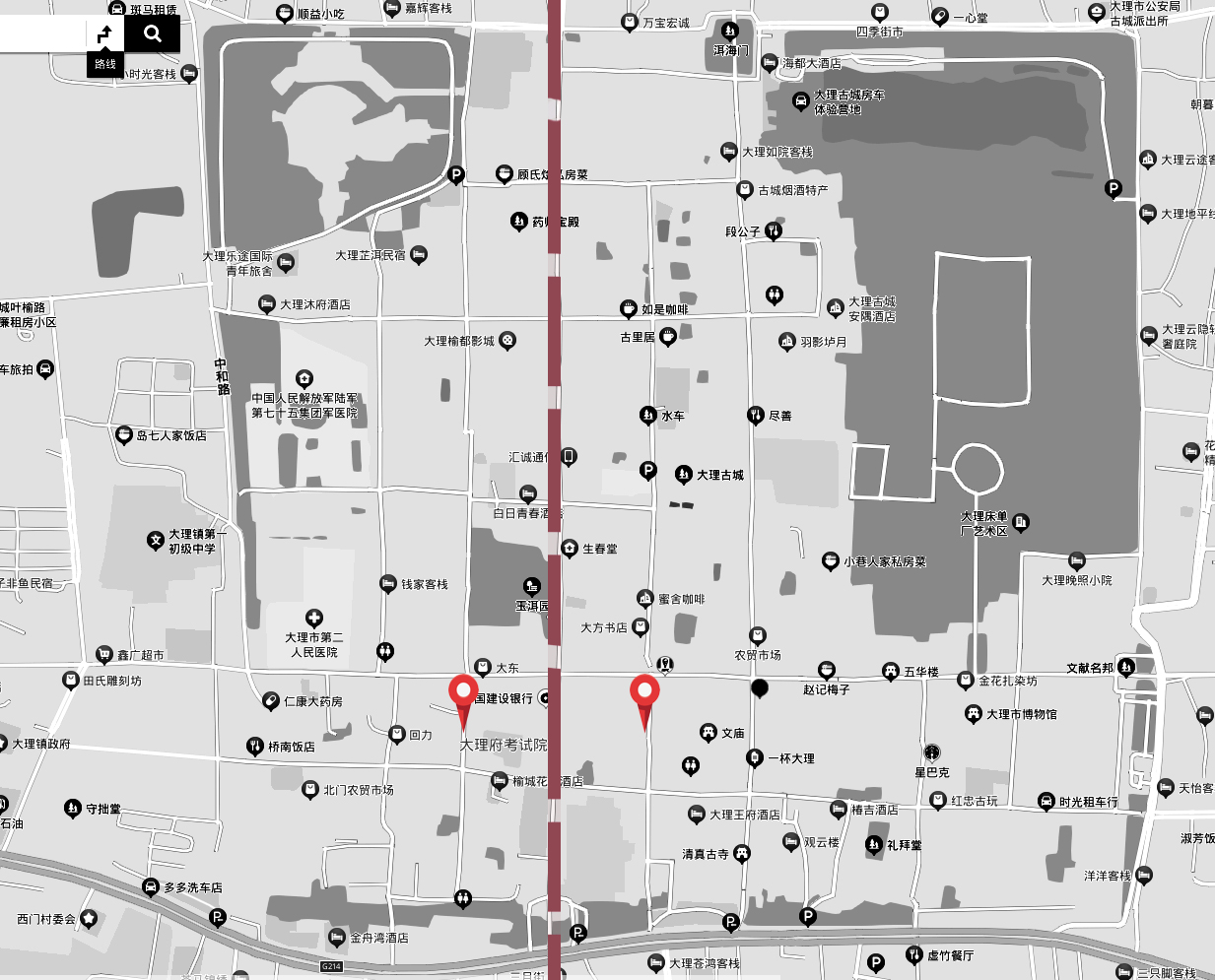(声音片段为立体声,最好带上耳机)/(The sound clip is stereo, preferably with headphones)
一、地图场景/Map scenes
人们沿着复兴路往北,走到了玉洱路的交叉口。他们向北面张望,说”那边没什么好逛的”,然后返回游客如织的复兴路南端。这样的场景在这个地理位置(复兴路和玉洱路交叉口)反复上演。那么,在这条南北向贯穿大理古城的街道究竟呈现了何种南北面的不同?他们要逛的是什么?直接地,我们可以从地图标示上看到区别。
People walked north along Fuxing Road to the intersection of Yu’er Road. They looked north, said, “There’s not much to do over there,” and then returned to the southern end of Fuxing Road, which is full of tourists.Such scenes are repeated in this geographical location (the intersection of Fuxing Road and Yu’er Road). So, what kind of difference does the north and south of this street that runs through the ancient city of Dali in the north-south direction present? What are they going to visit?Directly, we can see the difference from the map display.
复兴路南端👇/The southern end of Fuxing Road
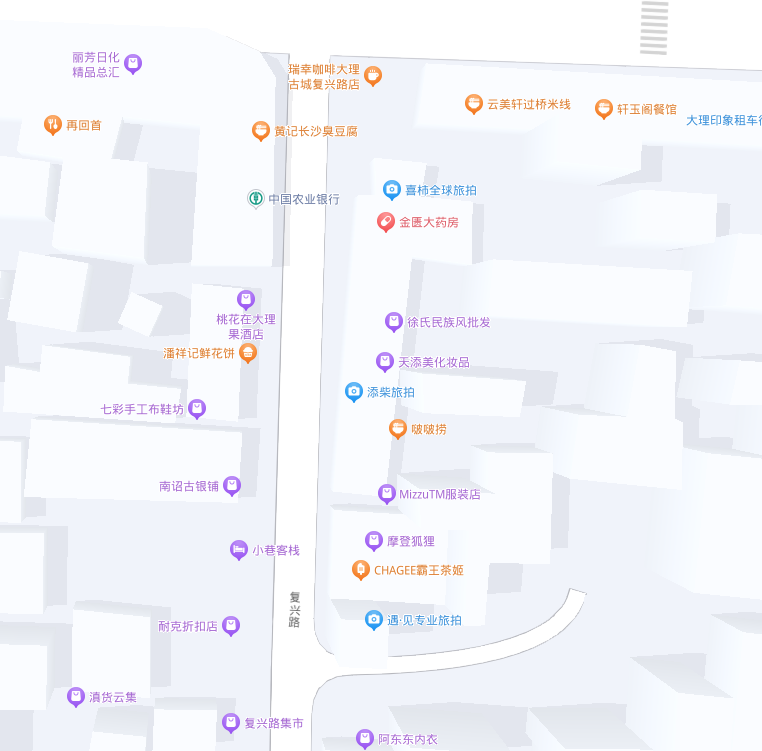
复兴路北端👇/North end of Fuxing Road

我们也可以利用地图标识再看看距离玉洱路同样距离但分别在古城南北方向的两条东西贯通的街道——人民路(南边)和平等路(北边)。
We can also use the map to take a look at the two east-west streets that are the same distance from Yu’er Road but in the north and south directions of the ancient city – Renmin Road (south) and Pingping Road (north).
人民路上段👇/Upper People’s Road

平等路上段👇/Upper PingDeng Road

在这些地图标识中,我们可以设想临街店铺的贩卖内容以及匹配其贩卖内容的(装修)视觉呈现和(背景音乐)声响营造会让空间的氛围——场景的审美感受呈现出差异性。而场景的氛围会塑造身处其中的人们的自我表达的方式以及对个体身份的感知。那么以开头的游客视角。南端分立着咖啡馆、酒吧、餐厅、以民族风或以文艺之风命名的店铺。北端分立着药店、菜市场、五金店、随处可见的连锁店。南端的氛围支持着人们以非日常的、异域的、炫目爱炫的方式去自我表达。而北端则支持着人们以日常的、睦邻的、理性经济的方式去自我表达。而对于游客来说,我就是为脱离日常生活而来,那么,北面有何好逛的呢?
In these map signs, we can imagine that the content of the store on the street and the visual presentation (decoration) and sound creation (background music) that match the content of the store will make the atmosphere of the space – the aesthetic feeling of the scene show differences.The atmosphere of the scene shapes the way people express themselves and perceive their individual identity. Then from the beginning of the tourist’s perspective. At the southern end, there are cafes, bars, restaurants, and shops named after ethnic or literary styles. At the north end, there are pharmacies, wet markets, hardware stores, and chain stores everywhere. The atmosphere of the South End supports self-expression in an extraordinary, exotic, glamorous way. The North End, on the other hand, supports self-expression in a daily, neighborly, rational and economic way. As for tourists, I’m here to get away from everyday life, so what’s there to do in the north?
二、二元城市结构/Binary urban structure
为何一个城市会出现南北差异?是什么因素带来的这种变化?我们在大理生活了10年左右的时间,经历了大理从早前的舒适之地到现在的拥挤繁忙之所的演变。历史上,大理古城始建于明洪武十五年。仿内地城池井字布局,方正有序。大理地势西高(苍山侧)东低(洱海侧)。在大理城建成初期,政治阶层结构和地理结构形成对应,西重东轻。大理府衙、提督署、文庙、武庙均在城西一侧,手工业者、商贩均在城东一侧。城市布局依地理位置加入政治设计而定。若我们想象当时在城中游走时所听到的声音。它会有一种西东的对立。而声音的西东对立是政治阶层的转换。西边严肃、肃穆,东边嘈杂而日常。
Why is there a difference between North and South in a city? What is the reason for this change?We have lived in Dali for about 10 years and have experienced the evolution of Dali from a comfortable place in the early days to a crowded and busy place now.Historically, the ancient city of Dali was built in the fifteenth year of Hongwu in the Ming Dynasty. Imitating the layout of the inland city tic-tac-toe, it is square and orderly.The terrain of Dali is high in the west (Cangshan side) and low in the east (Erhai side). In the early days of the construction of Dali City, the political class structure and the geographical structure formed a correspondence, and the west was heavy and the east was light. Dali Mansion, Admiral’s Office, Confucian Temple, and Wu Temple are all on the west side of the city, and handicraftsmen and traders are all on the east side of the city.The layout of the city depends on the geographical location and political design. If we imagine the sounds we heard as we walked around the city. It will have a kind of opposition between the West and the East. And the opposition between the West and the East is the transformation of the political class. The west side is solemn and solemn, and the east side is noisy and everyday.
至大理古城作为旅游城市定位后,塑造其布局的是经济活动。城市布局开始呈现南北分立之态。大理新城下关城区位于大理南侧,各处去往大理的交通均在下关过度,游客需以南入城。而后,开始慢慢以始于苍山门的玉洱路为中轴线,南北分立。游客们从南门贯入,南门成为游客入大理的主要城门。围绕着游客的经济活动开始从南向北扩展开。逐渐地,围绕着当地人生活的经营往北面迁移,直至跨过玉洱路。而在古城规划中,南北纵贯之街大多禁止通车,唯独玉洱路还能通车,让其中心感更为明显。
After the positioning of the ancient city of Dali as a tourist city, it is economic activities that shape its layout. The layout of the city began to show a state of separation between the north and the south. Dali New City Xiaguan City is located in the south of Dali, the traffic to Dali is excessive in Xiaguan, tourists need to enter the city in the south. Then, it began to slowly take Yu’er Road, which began at Cangshan Gate, as the central axis, and separated from north to south. Tourists enter from the south gate, and the south gate becomes the main gate for tourists to enter Dali. The economic activities surrounding tourists began to expand from south to north. Gradually, the businesses that revolved around the lives of the locals moved north until they crossed Yu’er Road. In the planning of the ancient city, most of the streets running through the north and south are closed to traffic, but Yu’er Road can still be opened to traffic, making its sense of centrality more obvious.
而当我们以玉洱路作为中轴来看的话,大理古城南北两边呈现几何对称的模样。南面人民路、洋人街/护国路是主要的东西向街道。而北面对应平等路、银苍路为主要的东西向街道。博爱路、复兴路、新民路、广武路、叶榆路垂直玉洱路成为主要的南北向街道。
When we take Yu’er Road as the central axis, the north and south sides of the ancient city of Dali show a geometrical appearance. Renmin Road and Foreigner Street/Huguo Road are the main east-west streets. The north side is facing Pingping Road and Yincang Road as the main east-west streets. Bo’ai Road, Fuxing Road, Xinmin Road, Guangwu Road, Yeyu Road, and Yu’er Road become the main north-south streets.
由南入大理可能只是一种南北分化的原因。以对称的两条路来具体而言(人民路和平等路)。人民路(南)在其他的属性上具有开发的优势:平等路(北)上坐立着军区医院,医院围墙占据了数百米的路边。而人民路两边立房,且连通东边城门洱海门(东西门并未在同一条街)。同时对洋人街(南)以及银苍路(北)而言。银苍路被玉洱公园围墙占据数百米。而最早的涉外宾馆在洋人街(因此得名)。
Moving from the south to Dali may only be a reason for the north-south differentiation. Specifically, take two symmetrical roads (People’s Road and Equality Road). Renmin Road (South) has the advantage of development in other attributes: on Pingping Road (north) sits the Military Hospital, and the hospital wall occupies hundreds of meters of roadside. Houses are erected on both sides of Renmin Road, and they are connected to the east gate of the city gate Erhai Gate (the east and west gates are not on the same street). At the same time, for Foreigner Street (South) and Yincang Road (North). Yincang Road is occupied by the wall of Yu’er Park for hundreds of meters. The earliest foreign-related hotel was in Foreigner Street (hence the name).
当然我们还可以再一步想为何军区医院和玉洱公园都规划在城市北侧。可以把这些都当作现象来考量,它是一种螺旋上升的城市规划方向。结果导向了城中南北的差异。
Of course, we can also go one step further and wonder why the military hospital and Yu’er Park are planned on the north side of the city. All of this can be considered as a phenomenon, and it is a spiraling direction of urban planning. The results lead to the difference between the north and the south of the city.
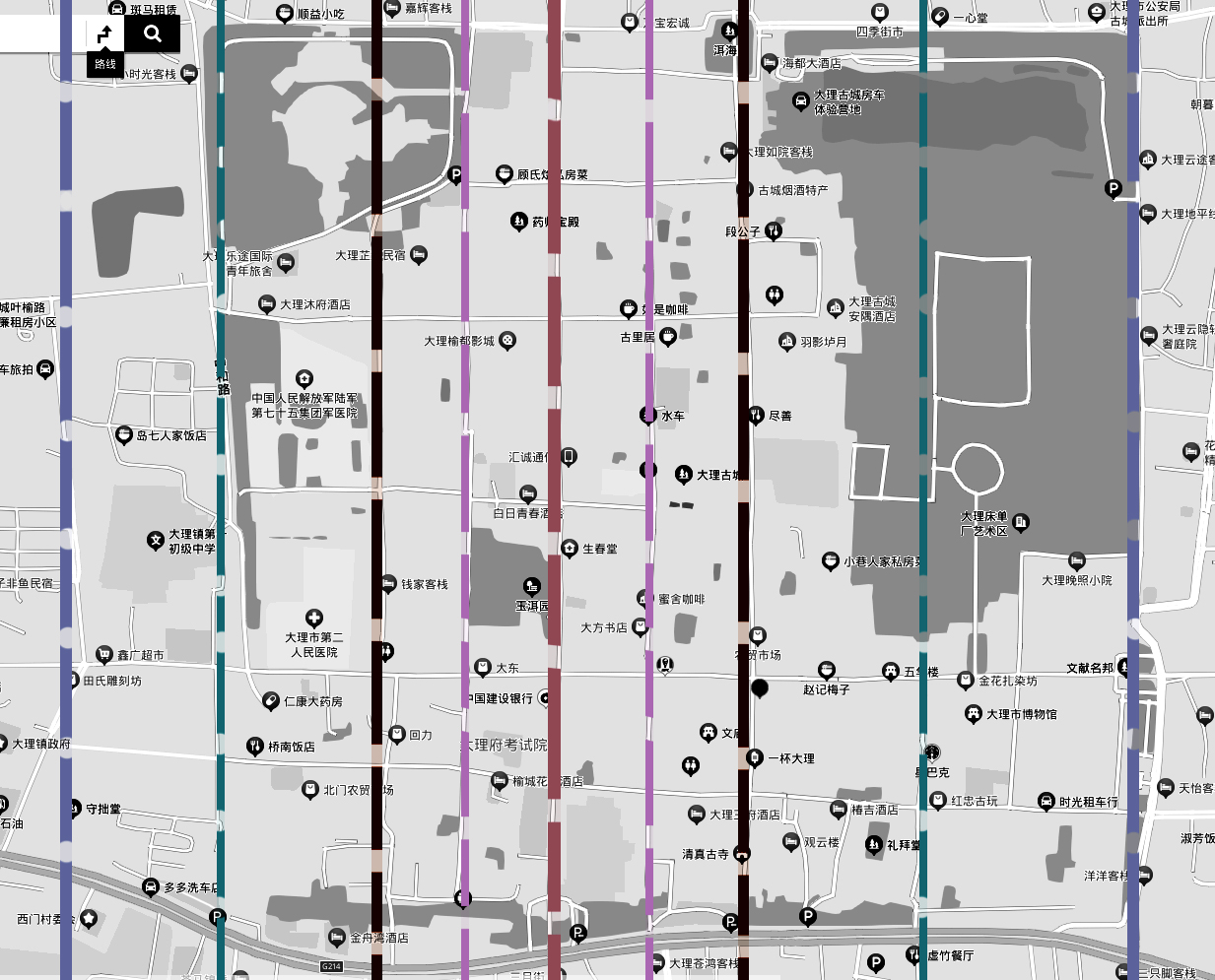
以玉洱路为中轴线的城市布局/The urban layout with Yu’er Road as the central axis
这样的城市布局形成了一种场景的对立——本土的和旅游的对立。日常、嘈杂、有序的和无序、时髦、非日常的对立。
This urban layout creates a kind of opposition of scenes – the opposition between the local and the touristy. The opposition between the everyday, noisy, orderly and disorderly, fashionable, and non-everyday.
三、声音介入/Sound intervenes
声音场景是这种二元结构的一种呈现。通过声音去发现这种城市现象,我们可以把这个过程当作一种实践——一种声音介入场景的实践。
我们把玉洱路做为中轴线,在它的南北两侧各选取距玉洱路相同距离的对称点(大多在对称的街道上)。在这些对称的地理位置,我们分别进行录音。有些录音是共时性的。我们同时按下录音键(一种即时的对立)。大多数的地理位置的录音我们忽视了共时性。这些录音横跨时间长达数年。相当于我们人为提取了这些对称的地理位置的声音特性。以它们的特性来构成对立。由此构成了一组超越时间纯粹以地理为参考的对照音频。
从记录的呈现上,有一个很关键的问题:为何从声音角度?图像过于直观和具体。它不够抽象,以至于无法联想、类比。在声音的抽象性上,一种联想必须要发生,个人会建构一种场景——个人心中的对称城市的图景。或者以这个声音为想象基础构建一个对立的城市布局。基于我们耳朵处理声音的特征——它不能像视觉那样同时观看几张图像而相互不受干扰。所以我们将声音分别置于左右声道。这样以我们自己的感知中心作为中轴线,去感受一种声音的对立,然后去构建一种城市框架。
而这种声音介入场景介入生活的方式是有趣的。这种方式可以促使我们对城市的场景进行模型的建构和社会性的思考。只不过在这里,在对称的大理,声音是不对称的。
The sound scene is a presentation of this dualistic structure. To discover this urban phenomenon through sound, we can see this process as a practice—a practice of sound intervening in the scene.
We took Yu’er Road as the central axis, and selected symmetrical points at the same distance from Yu’er Road on the north and south sides of it (mostly on symmetrical streets). In these symmetrical geographical locations, we make separate recordings. Some recordings are synchronic. We press the record button at the same time (a kind of instant opposition). For most geo-location recordings, we ignore synchronicity. These recordings span several years. It is equivalent to us artificially extracting the sound characteristics of these symmetrical geographical locations. By their characteristics to constitute opposition. The result is a set of contrasting audios that transcend time and are purely geographically referenced.
In terms of the presentation of the recording, there is a key question: why from the sound perspective? The images are too intuitive and specific. It’s not abstract enough to be associated or analogous. In the abstraction of sound, an association must take place, and the individual will construct a scene—a picture of a symmetrical city in the individual’s mind. Or use this sound as an imaginary basis to construct an opposing urban layout. Based on the characteristics of our ears to process sound – it cannot view several images at the same time without interfering with each other, as is the case with vision. So we put the sound on the left and right channels. In this way, we use our own perceptual center as the central axis, to feel the opposition of sounds, and then to construct a kind of urban framework.
And this way of intervening in the scene and intervening in life is interesting. In this way, we can be prompted to model the urban scene and think about it socially. It’s just that here, in symmetrical Dali, the sound is asymmetrical.
No.1
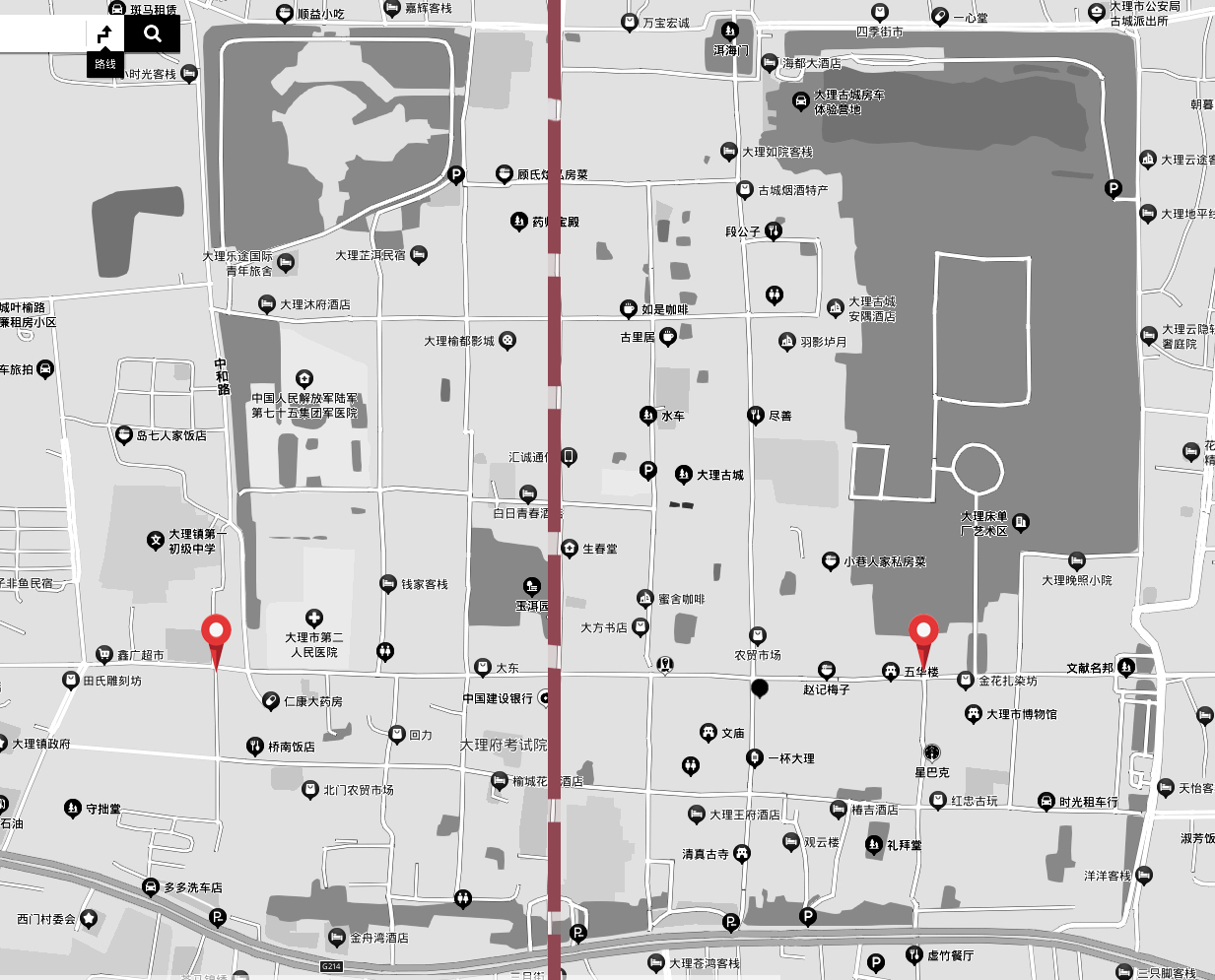
No.2
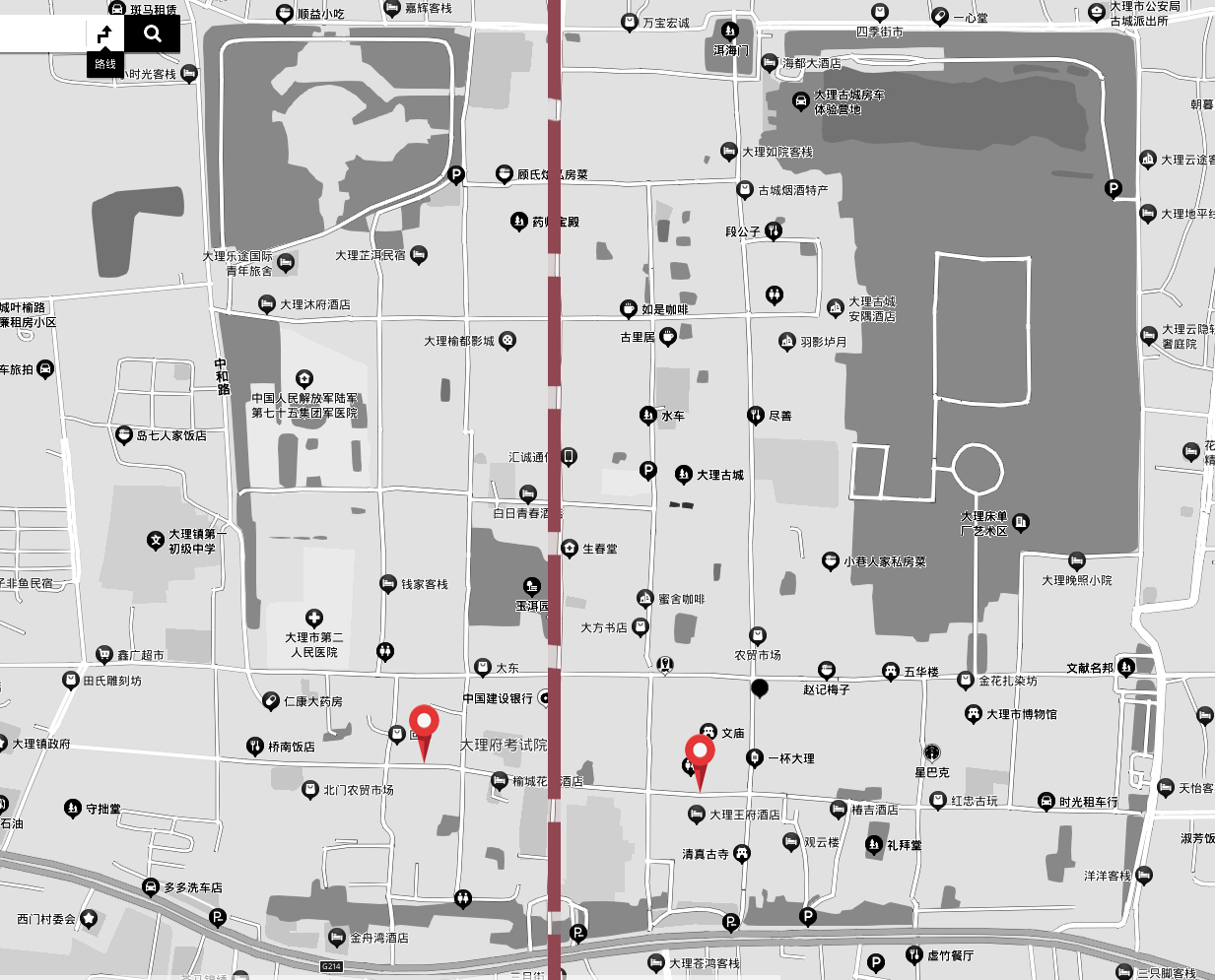
No.3

No.4
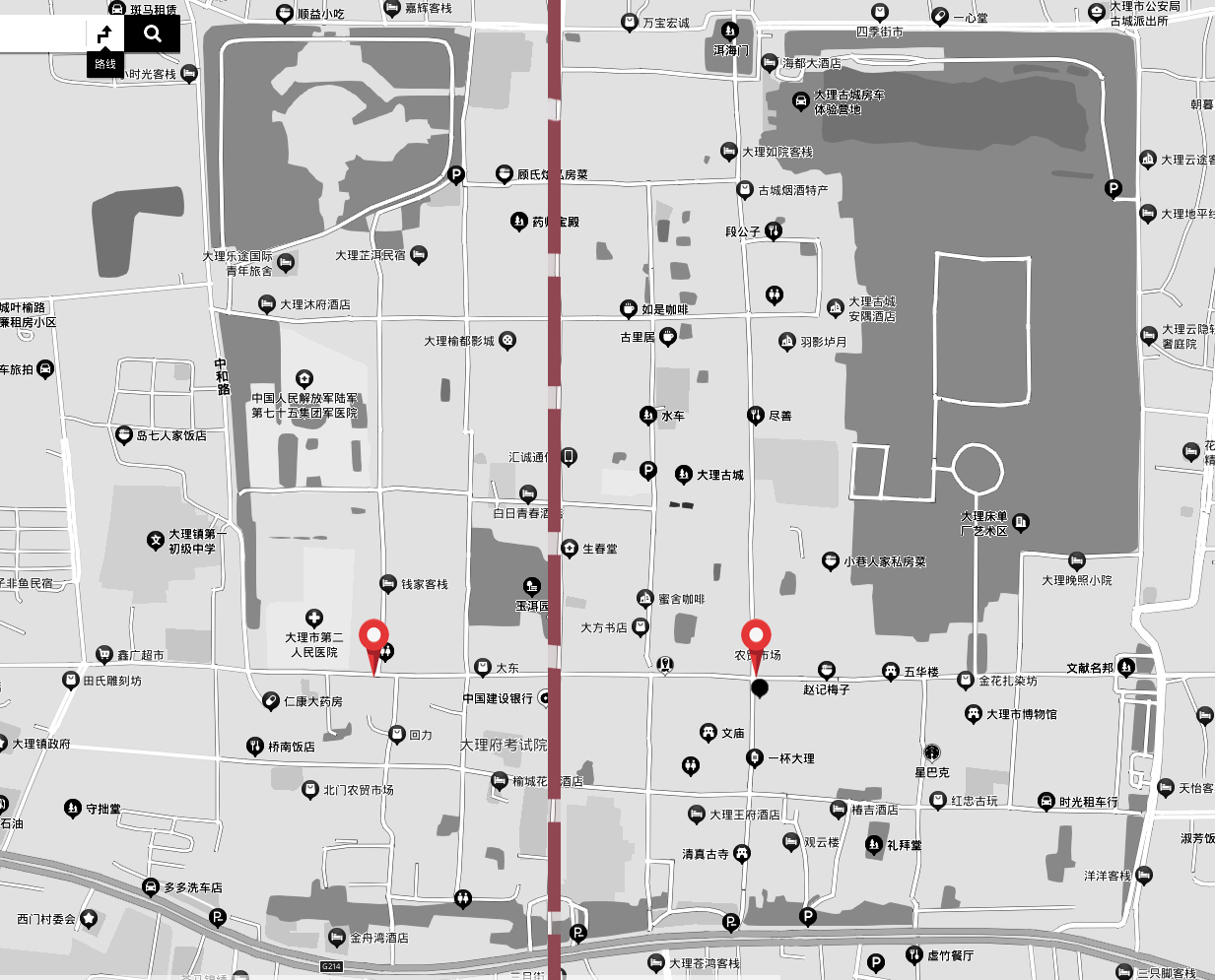
No.5
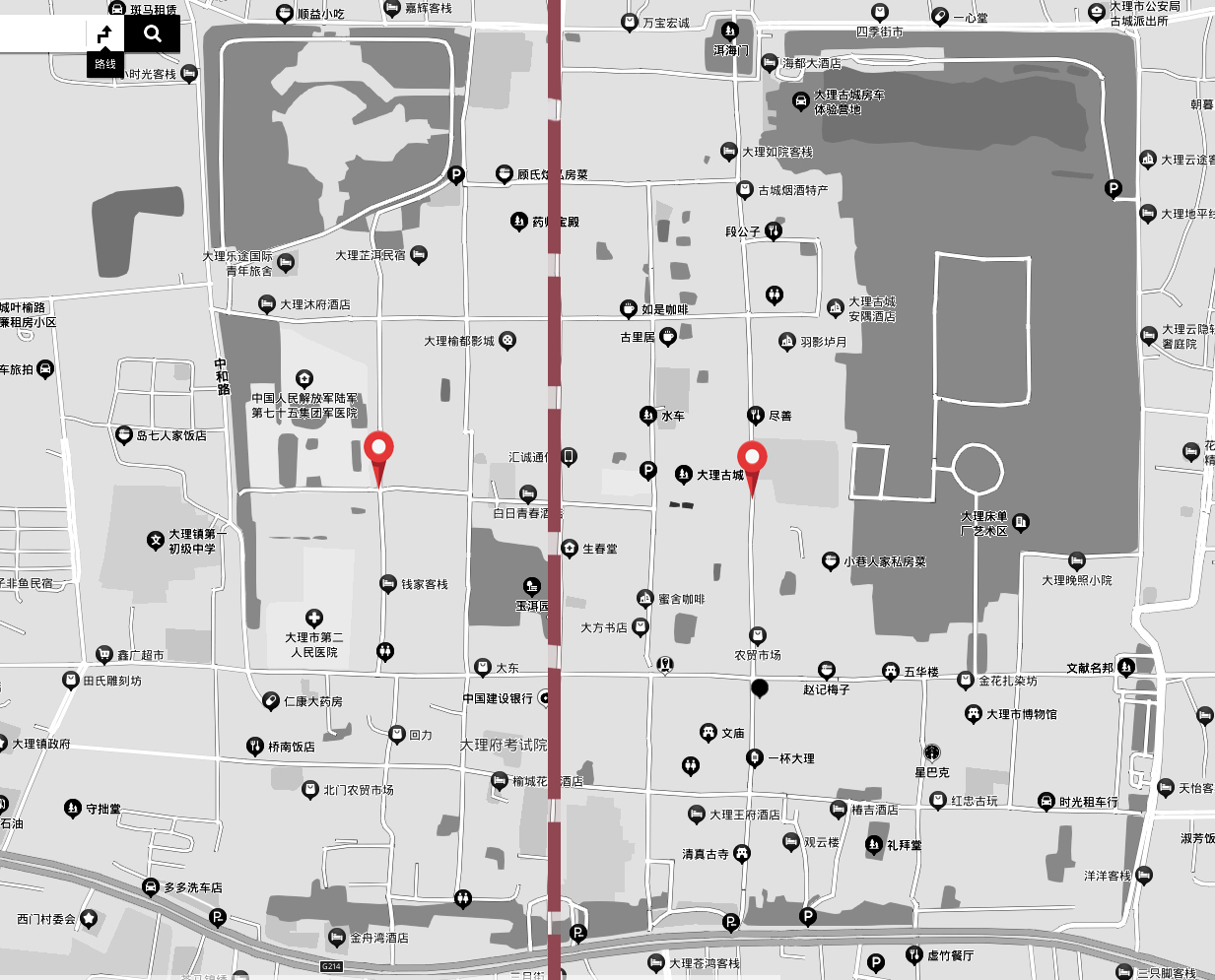
No.6
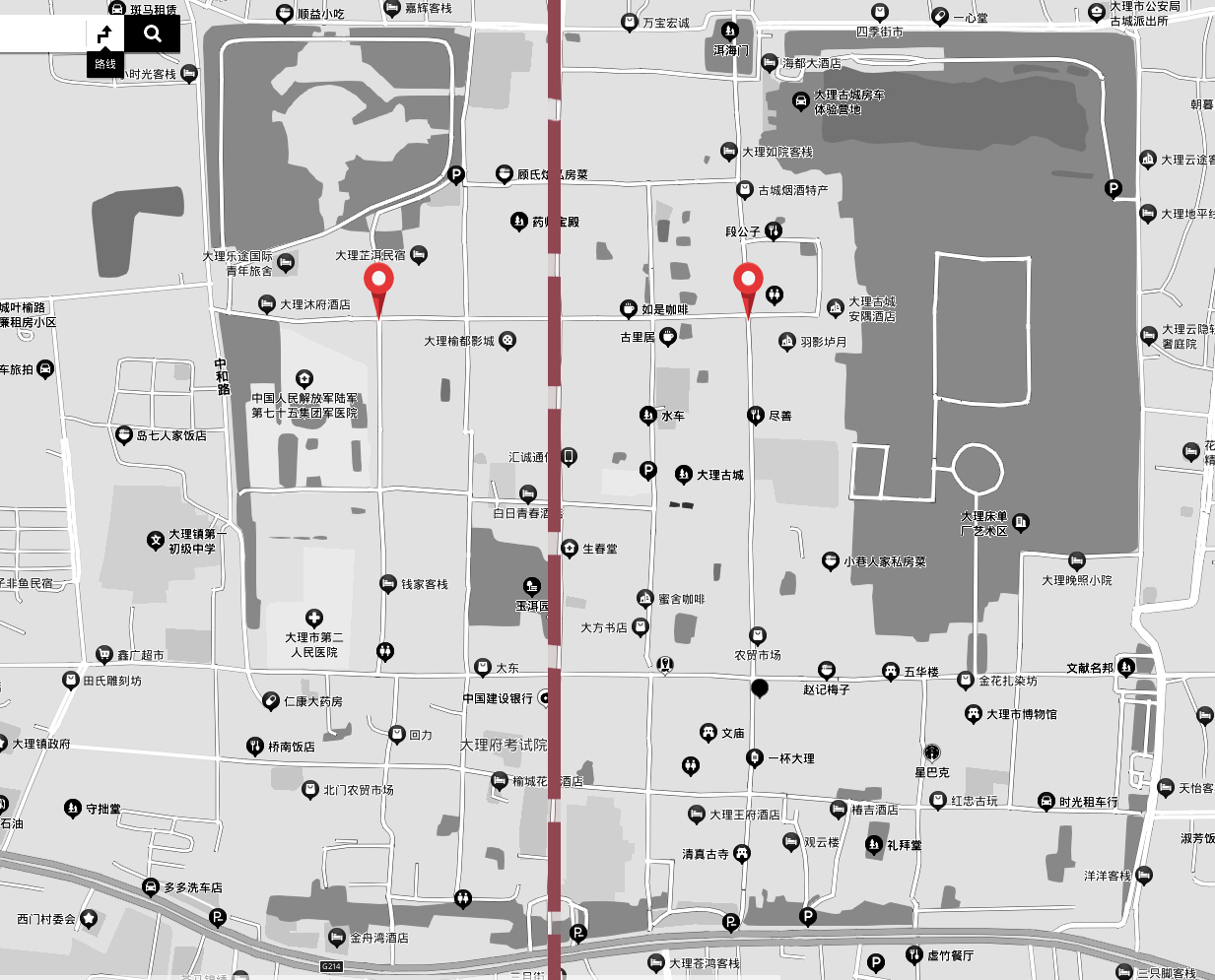
No.7
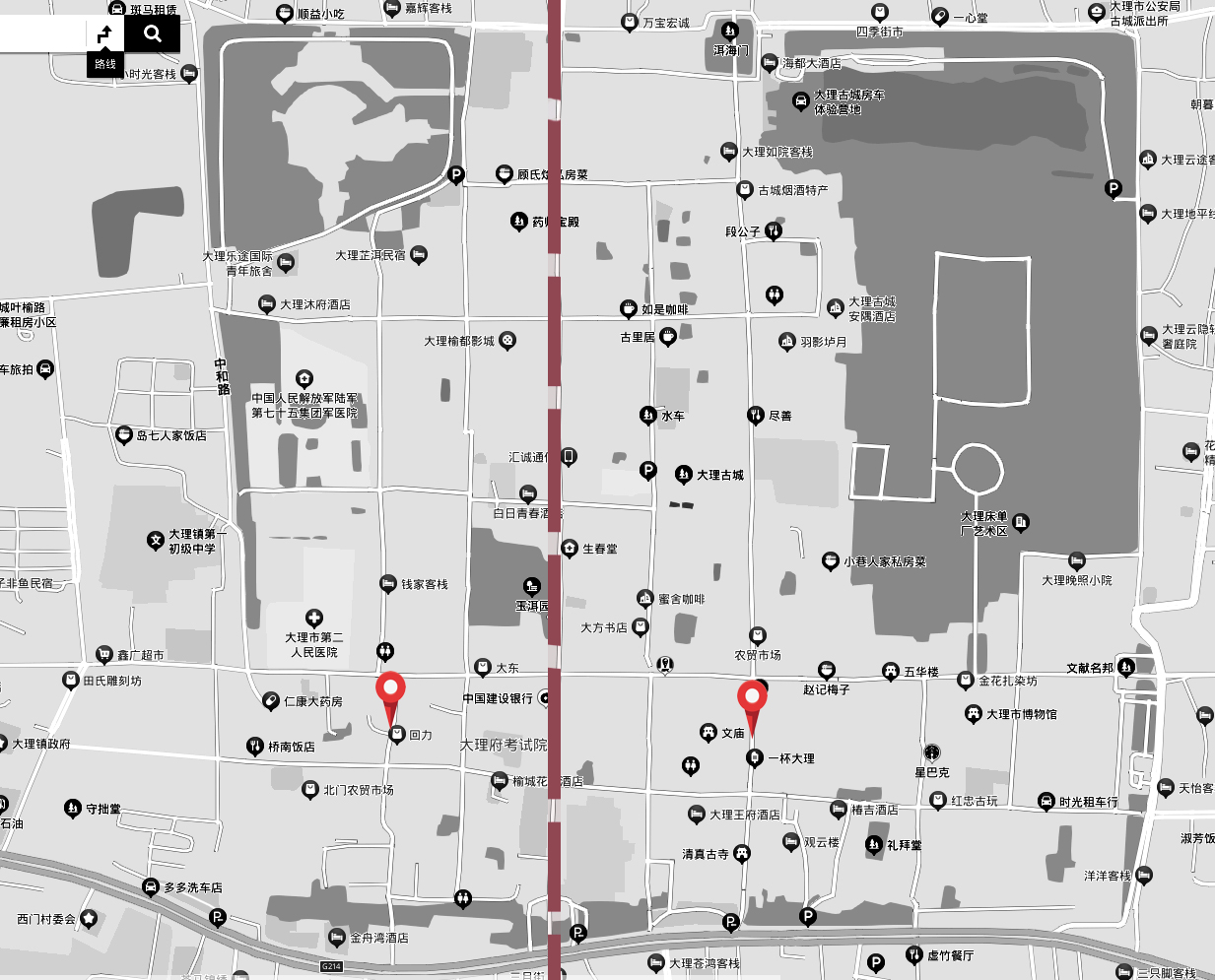
No.8

No.9
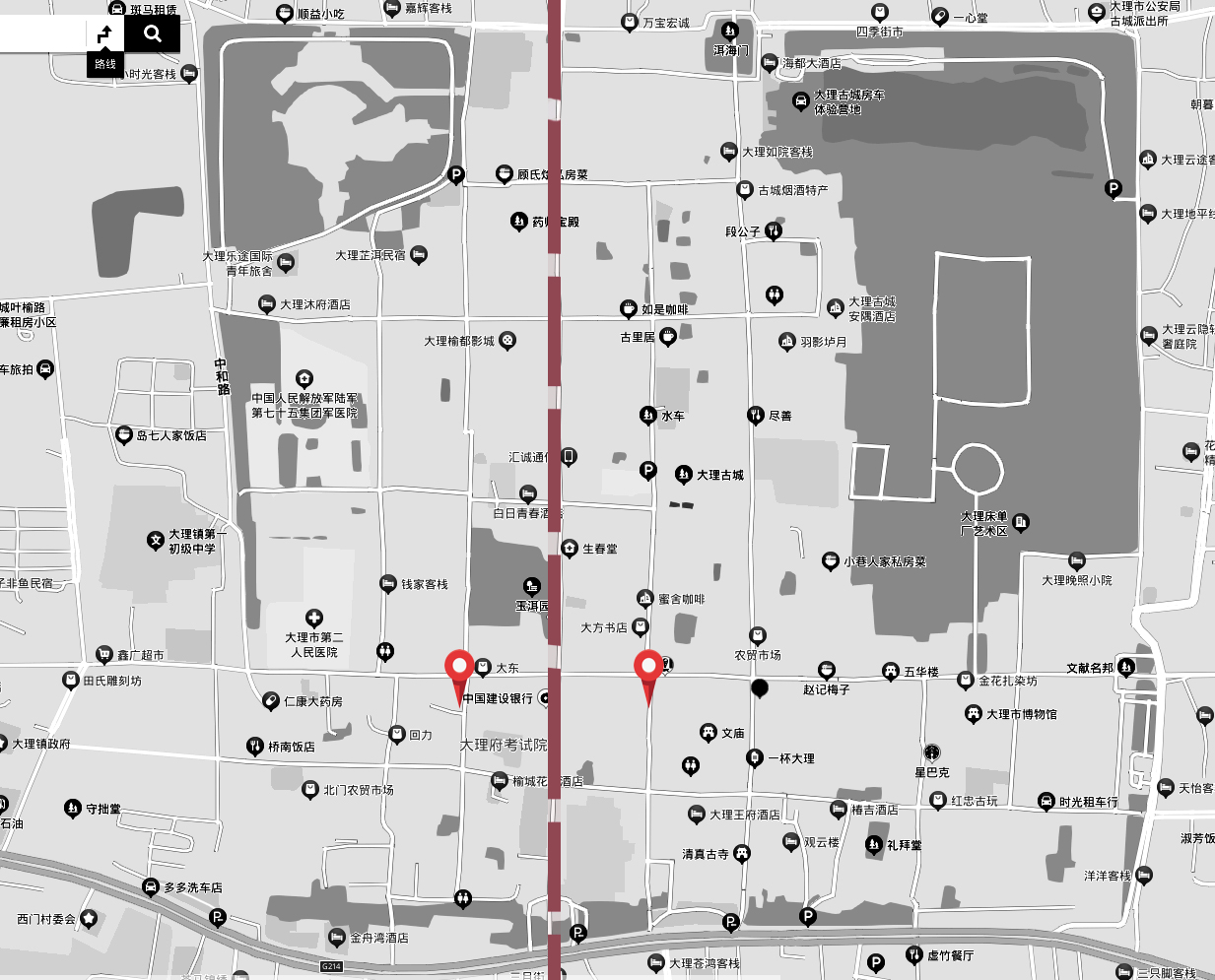
No.10
